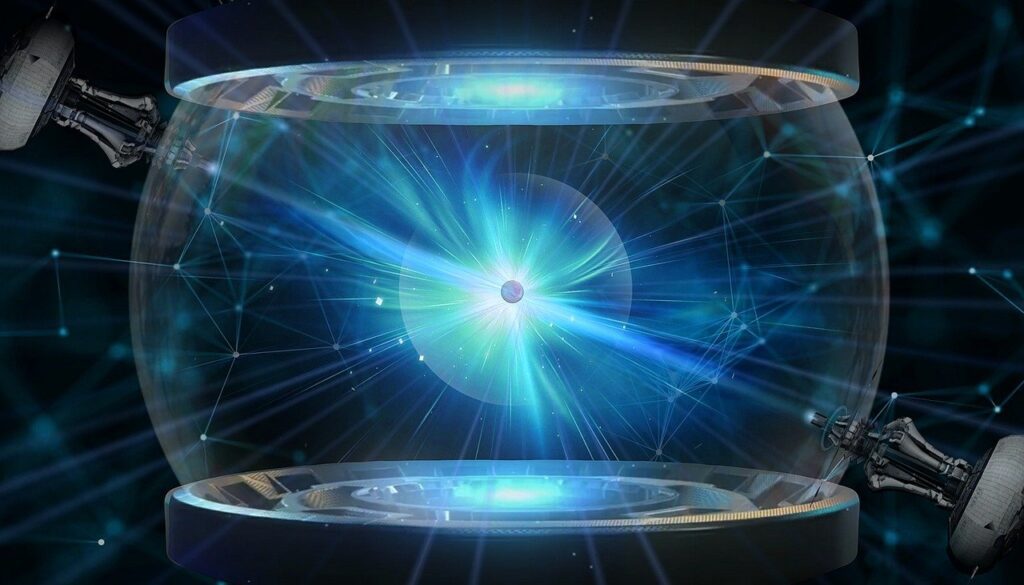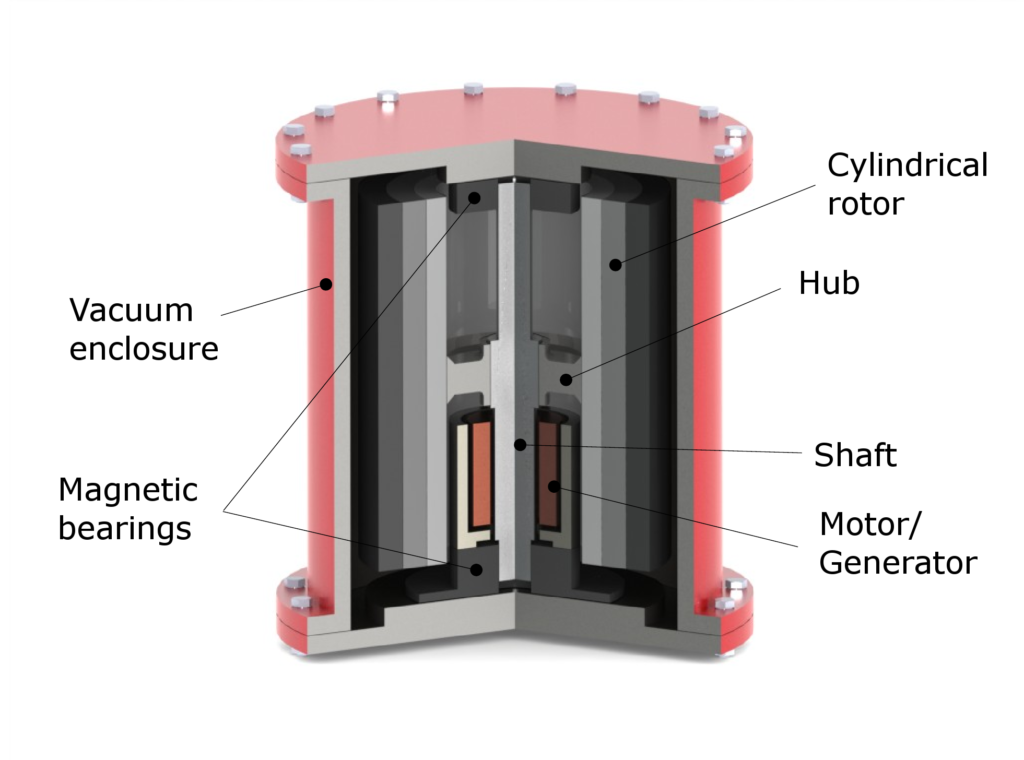Energy Storage
Introduction
The process of capturing energy generated at one time for the purpose of using it at a later period is known as energy storage. The goal of energy storage is to decrease imbalances between energy demand and energy production. The term “accumulator” or “battery” is often used to refer to a device that accumulates energy. Radiation, chemistry, gravitational potential, electrical potential, electricity, the heat stored in latent form, high temperature, and kinetic energy are all different kinds of energy that may exist. The process of transforming energy from forms that are difficult to store into forms that may be stored more readily or at a lower cost is known as energy conversion.

While some systems can only store energy for a relatively short period of time, others can do it for considerably longer. The majority of the world’s bulk energy storage is presently made up of hydroelectric dams, both the traditional and pumped varieties. System energy storage is a term that refers to a set of several techniques that are used to store energy on a wide scale inside an electrical power grid.
Examples of common forms of energy storage include the rechargeable battery, which stores chemical energy that can be readily converted into electricity in order to power a mobile phone; the hydroelectric dam, which stores energy in a reservoir as gravitational potential energy; and ice storage tanks, which store ice that was frozen using less expensive energy at night in order to meet peak daytime demand for cooling. Fossil fuels such as coal and gasoline contain old energy that was originally produced by creatures that later perished, were buried, and over the course of time were subsequently transformed into fossil fuels. This energy was originally acquired from sunlight by the organisms. The chemical form of food is a sort of energy storage, and its production is analogous to that of the production of fossil fuels.
A distinguishing feature of the electric power industry is that the quantity of energy that can be produced during short time periods is generally constant, despite the fluctuating daily demand for electricity. Creating technology to store electrical energy such that it is always accessible to fulfil demand would be a significant advancement in power distribution. In an effort to achieve this objective, energy storage devices may regulate the amount of power necessary to provide clients during times of high demand. These devices can also assist make renewable energy, the production of which cannot be regulated by grid operators, dispatchable and smooth.
In addition, they may balance microgrids in order to create a healthy balance between generation and load. They may produce a more stable power supply for high tech industrial facilities by regulating the network’s frequency to maintain a balance between the network’s load and power generated. Consequently, energy storage and power electronics possess significant potential to revolutionise the electric power business.
High voltage power electronics, such as switches, inverters, and controllers, provide accurate and quick control of electric power to facilitate long-distance transmission. This feature will enable the system to react to disruptions effectively and function more efficiently, eliminating the need for additional infrastructure. The DOE has a significant challenge in reducing the price of energy storage technologies and power electronics and accelerating their commercial uptake.
In the other hand, the act of collecting energy in certain apparatus or systems so that it may be drawn upon at a later time to meet specific requirements is referred to as energy storage. This allows businesses and industries to store energy that may then be used when there is an increase in demand or when there are disruptions to the grid. As a result, energy storage helps to keep the supply-demand balance for customers in perfect harmony at all times and protects them from problems such as erratic power output and abrupt spikes in price. To achieve more sustainable operations, however, energy storage is becoming an increasingly crucial component, especially in the information and communication technology industries. This is due to the fact that energy storage allows businesses to store sustainable kinds of energy such as solar, wind, and others like them. The process of storing energy entails converting it into its many forms because certain forms are easier to store than others. This is because some forms of energy are more compact than others. There are also a number of other processes that are responsible for these operations. Now that we have that out of the way, let’s examine the operation of some of the most essential kinds of energy storage techniques.
Different Types of Energy Storage?
There are several options available for storing energy; however, before to select any one of these options, it is necessary to have a solid understanding of the needs of the company. On the basis of this information, you will be able to evaluate the system’s scalability, the length of time required for the charging and discharging cycle, the cost of storage, and the system’s impact on the environment, among other things. The following are examples of some of the most common forms of energy storage

Energy Storage Using Mechanical
Energy storage using mechanical means typically involves the conversion of electrical or other forms of energy into mechanical energy, which is then stored and later converted back into the original form of energy when needed. There are several types of mechanical energy storage systems, including:
- Flywheels: A flywheel is a rotating disk that stores energy in its rotational motion. When electricity is supplied to a motor, it accelerates the flywheel, storing the energy as kinetic energy. When energy is needed, the flywheel’s rotational energy is converted back into electricity using a generator.
- Compressed Air Energy Storage (CAES): CAES systems store energy by compressing air in a container, such as an underground cavern or a large tank. When energy is needed, the compressed air is released and expanded through a turbine, generating electricity.
- Pumped Hydroelectric Storage: This system involves pumping water from a lower reservoir to a higher reservoir during times of low electricity demand. When energy is needed, the water is released from the higher reservoir, flowing through a turbine to generate electricity.
- Mechanical Springs: Springs store energy in their deformation when they are compressed or stretched. When the energy is needed, the spring is released, returning to its original shape and releasing the stored energy.
- Gravity Energy Storage: This system uses gravity to store energy by raising a weight to a higher elevation during low energy demand periods. When energy is needed, the weight is lowered back down, releasing the stored energy.

Mechanical energy storage systems have the advantage of being relatively simple, durable, and with no emissions or hazardous materials. However, they may have limited energy density and require large storage facilities for sufficient energy storage.
Energy Storage of Hydropower Via Pumping
Hydropower energy storage via pumping, also known as pumped hydro storage, is a type of energy storage that uses water and gravity to store and release energy. This system involves pumping water from a lower reservoir to a higher reservoir during times of low electricity demand, and then releasing the water back down through a hydroelectric generator to generate electricity during times of high demand.

The process of hydropower energy storage via pumping works as follows:
- During periods of low energy demand, excess electricity is used to pump water from a lower reservoir to a higher reservoir. This increases the potential energy of the water, which is stored until it is needed.
- When electricity demand increases, the stored water is released back down through a hydroelectric generator, which converts the potential energy of the falling water into electricity.
- Once the electricity demand is met, the water is pumped back up to the higher reservoir to repeat the process.
Pumped hydro storage systems have several advantages over other types of energy storage systems. For example:
- They have a high energy density, meaning they can store large amounts of energy for long periods of time.
- They can respond quickly to changes in energy demand, allowing for rapid adjustments to the electrical grid.
- They have a long lifespan, with some facilities operating for several decades.
- They can also provide additional benefits, such as flood control and irrigation.
However, there are also some challenges associated with hydropower energy storage via pumping, such as the need for large amounts of land and water, and the potential environmental impacts on aquatic ecosystems.
Energy Storage Utilizing a Flywheel
Flywheel energy storage is a type of mechanical energy storage that stores kinetic energy in a spinning flywheel. This system involves converting electrical energy into mechanical energy by spinning the flywheel, and then converting the mechanical energy back into electrical energy when needed.
The process of flywheel energy storage works as follows:
- Electrical energy is used to spin the flywheel to high speeds, typically between 20,000 and 50,000 revolutions per minute (rpm). The flywheel is suspended by magnetic bearings, which levitate and rotate the flywheel without any physical contact, minimizing friction and energy loss.
- The high-speed rotation of the flywheel creates kinetic energy, which is stored in the flywheel.
- When electricity is needed, the kinetic energy stored in the flywheel is converted back into electrical energy using a generator. The energy is released as the flywheel slows down, which can be controlled by a motor or brake system.
Flywheel energy storage has several advantages over other types of energy storage systems. For example:
- It has a high power density, meaning it can deliver large amounts of power quickly.
- It has a long lifespan, with some systems operating for more than 20 years.
- It is efficient, with little energy loss due to friction or heat.
- It is environmentally friendly, with no emissions or hazardous materials.

However, flywheel energy storage also has some limitations. For example:
- It has a lower energy density compared to some other storage technologies, meaning it may not be suitable for long-term energy storage.
- The flywheel must be carefully balanced and maintained to avoid vibrations or failures.
- It may require additional safety features, such as containment systems, to prevent damage or injury in case of failure.
Compressed air for the Energy storage
Compressed air energy storage (CAES) is a type of energy storage that uses compressed air to store energy. This system involves compressing air and storing it in an underground cavern or large tank during periods of low electricity demand, and then releasing the compressed air to generate electricity during periods of high demand.

The process of compressed air energy storage works as follows:
- During periods of low energy demand, excess electricity is used to power compressors that compress and store air in an underground cavern or large tank.
- When electricity demand increases, the compressed air is released through a turbine, which generates electricity.
- The turbine is connected to a generator, which converts the mechanical energy of the turbine into electrical energy.
- Once the electricity demand is met, the compressed air is again stored in the underground cavern or tank for later use.
Compressed air energy storage has several advantages over other types of energy storage systems. For example:
- It has a relatively low cost and a high energy density, meaning it can store large amounts of energy for long periods of time.
- It has a long lifespan, with some facilities operating for several decades.
- It can be scaled up or down to meet different energy demands, making it a flexible storage option.
- It has no emissions or hazardous materials, making it environmentally friendly.
However, there are also some challenges associated with compressed air energy storage, such as the need for suitable underground caverns or large tanks, and the potential environmental impacts of the compression and expansion of air.
The Electrochemical Energy Storage
Electrochemical energy storage is a type of energy storage that converts electrical energy into chemical energy and stores it for later use. There are several different types of electrochemical energy storage, including batteries and fuel cells.
Batteries are the most common type of electrochemical energy storage. They work by converting electrical energy into chemical energy, which is stored in the battery. When the battery is used, the chemical energy is converted back into electrical energy, which can be used to power devices.
The process of electrochemical energy storage in batteries works as follows:
- During charging, electrical energy is applied to the battery, which causes chemical reactions to occur in the battery. These reactions store energy in the form of chemical bonds.
- When the battery is used, the chemical reactions are reversed, and the stored energy is released as electrical energy.
- The amount of energy stored in the battery depends on the materials used in the battery, as well as the size and design of the battery.
Fuel cells are another type of electrochemical energy storage. They work by converting the chemical energy stored in a fuel (such as hydrogen) into electrical energy. Fuel cells generate electricity through a chemical reaction between the fuel and an oxidizing agent (such as oxygen).
The process of electrochemical energy storage in fuel cells works as follows:
- The fuel is supplied to the fuel cell, where it reacts with an oxidizing agent (such as oxygen).
- The chemical reaction generates electricity and produces water and other byproducts as waste.
- The amount of electricity generated depends on the size and design of the fuel cell, as well as the amount of fuel and oxidizing agent supplied to the fuel cell.
Electrochemical energy storage has several advantages over other types of energy storage systems. For example:
- It has a high energy density, meaning it can store large amounts of energy in a small space.
- It is efficient, with little energy lost during the storage and conversion process.
- It has a long lifespan, with some batteries and fuel cells operating for several years.
- It can be used in a variety of applications, including portable devices, electric vehicles, and grid-scale energy storage.
However, there are also some challenges associated with electrochemical energy storage, such as the high cost of some materials used in batteries and fuel cells, and the potential for environmental impacts associated with the production and disposal of these materials.

